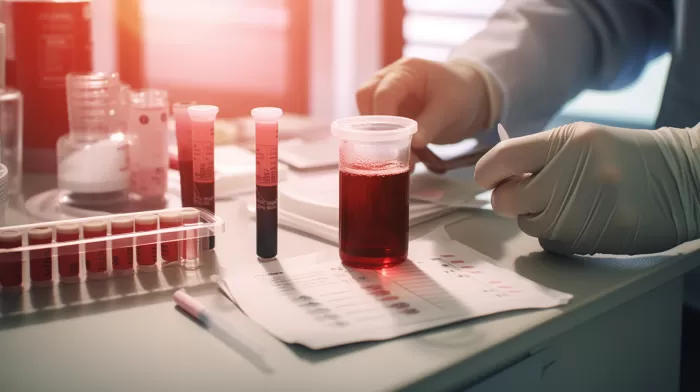One of the biggest fears that men face is the possibility of prostate cancer. The Prostate Specific Antigen (PSA) test is a blood test which is commonly used as a screening tool for prostate cancer. When a man discovers his PSA level is higher than average, it can be alarming. However, a high PSA result does not always mean prostate cancer is present.
Misunderstandings about PSA
The PSA test has often been the main basis for doctors to recommend aggressive treatments, many of which are unnecessary. Recent guidelines from the American Cancer Society recommend that no man should get tested for prostate cancer using the PSA blood test unless he is in a high-risk group or has a family history of prostate cancer, and should only have the test after he’s 50 years old. This has led some to worry about the possible financial impact on hospitals that have relied on men coming in for PSA testing.
This is not to say the PSA test is bad. Experts concur that the PSA test is an essential tool to monitor prostate and general health. It should be taken regularly, especially if there’s a family history of prostate cancer. The concern lies in the subsequent “rush to biopsy” after any sign of an above-average PSA level, followed by the often-unnecessary aggressive treatment of men with low-grade prostate cancer. Biopsies can be invasive and costly.
Understanding PSA levels
It’s essential to understand that there is no normal PSA level. A man’s PSA level is based on several factors: age, genetics, presence of benign prostatic hyperplasia (BPH), prostatitis, or any injury to the prostate region. Weight and sexual activity also play a part in PSA levels.
Don’t rush into a biopsy based on your initial PSA results – there are numerous lifestyle and health factors that could affect PSA levels. For instance, before having a PSA test, try to avoid the following actions in the preceding 48 hours:
- Riding a bike
- Participating in vigorous exercise
- Getting a prostate massage
- Having a digital rectal examination
- Engaging in sexual activity
Other things, such as medications, urinary tract infections, or injuries to the pelvic region, can also affect PSA test results. Discuss your recent medical history with your doctor so they can interpret the results accurately.
Adopting healthy habits
There are a few ways to maintain your prostate health, and these can even help lower your PSA levels. Start by eating fewer animal products and more vegetables. Tomatoes and pomegranate juice have been shown in studies to help lower PSA levels. Regular exercise and stress management also contribute to better health.
Supplements promoting prostate health can help too. New urine tests for prostate cancer can identify whether you have low-risk or high-risk prostate cancer, enabling more informed decisions about subsequent testing and treatment. Genetic tests are also on the horizon, promising to offer better information about the aggressiveness of tumors.
Some men have a specific gene variant that gives them a higher PSA reading. Talk to your doctor about your risk factors. For some, guided MRI technology may provide a minimally invasive means of locating potential tumors. This technology can more accurately target tumors than a biopsy. If you have a spiking PSA and think that you need more diagnosis, consider discussing this with your doctor.
Takeaway
The most significant problem with PSA tests is often what urologists do afterward. There is a massive rush to biopsy and aggressively treat patients who show anything suspicious, rather than encouraging healthier lifestyle choices that have been clinically shown to reduce and eliminate low-grade cancers. PSA tests can act as a gauge for your prostate health, providing early indications of potential issues. Just make sure to adopt a healthy lifestyle to manage and prevent further disease and avoid getting caught in the rush to biopsy.



